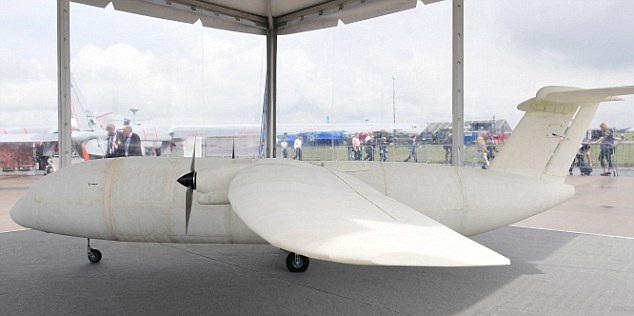THOR- Harbinger of a New Age in Aviation
Berlin Air Show had a small wonder. Though eyes are generally looking for bigger and better airplanes at these shows, it was this small drone airplane which caught the attention of everyone. Weighing just about 21 kgs and only 13 feet long, the windowless plane from Airbus stable was the cynosure of all eyes. This pilot-less drone plane was is the world’s first 3D printed airplane.
While it is no secret that 3D printing technology is being used in a number of fields, such as medical instruments, building construction and many others, it is for the first time that attempt has been made to develop a full airplane. It is also noteworthy that this technology is already in use in development of small parts of airplanes which obviates the need for having a number of tools and small parts to make a assembly. THOR, or Test of High-tech Objectives in Reality, is a big achievement in developing whole systems using this technique.
Some of the most obvious advantages of using 3D Printing in airplanes is that it saves time of development of airplane, reduces the cost of manufacturing the parts, considerably reduces the usage of a number of tools and has ecological benefits in that it is fuel efficient due to its light weight.
- Aer Lingus
- Aeroflot
- Aerolineas Argentinas
- Air Austral
- Air Canada
- Air France
- Air India
- Air Mauritius
- Air Vistara
- AirAsia
- Airlines General
- Airports
- Alaska Airlines
- Alitalia Airlines
- American Airlines
- Baggage
- British Airways
- Check-in
- Delta Airlines
- DGCA
- Dubai Airport
- easyJet Airlines
- Emirates Airlines
- Ethiopian Airlines
- Etihad airlines
- EVA Airlines
- GoAir
- GoI Airlines
- Gulf Air
- IATA
- IndiGo Airlines
- Information
- Jet Airways
- JetStar
- KLM Royal Dutch Airlines
- Lufthansa Airlines
- Malaysia Airlines
- Philippines Airlines
- Qantas
- Qatar Airways
- Reviews
- RyanAir
- S7 Airlines
- SAA
- Scoot Airlines
- Singapore airlines
- Southwest Airlines
- SpiceJet
- SWISS Airlines
- TripAdvisor
- TSA
- Uncategorized
- United Airlines
- US Airways
- Vietnam Airlines
- Virgin Australia
- Volaris Airlines
- WestJet Airlines

